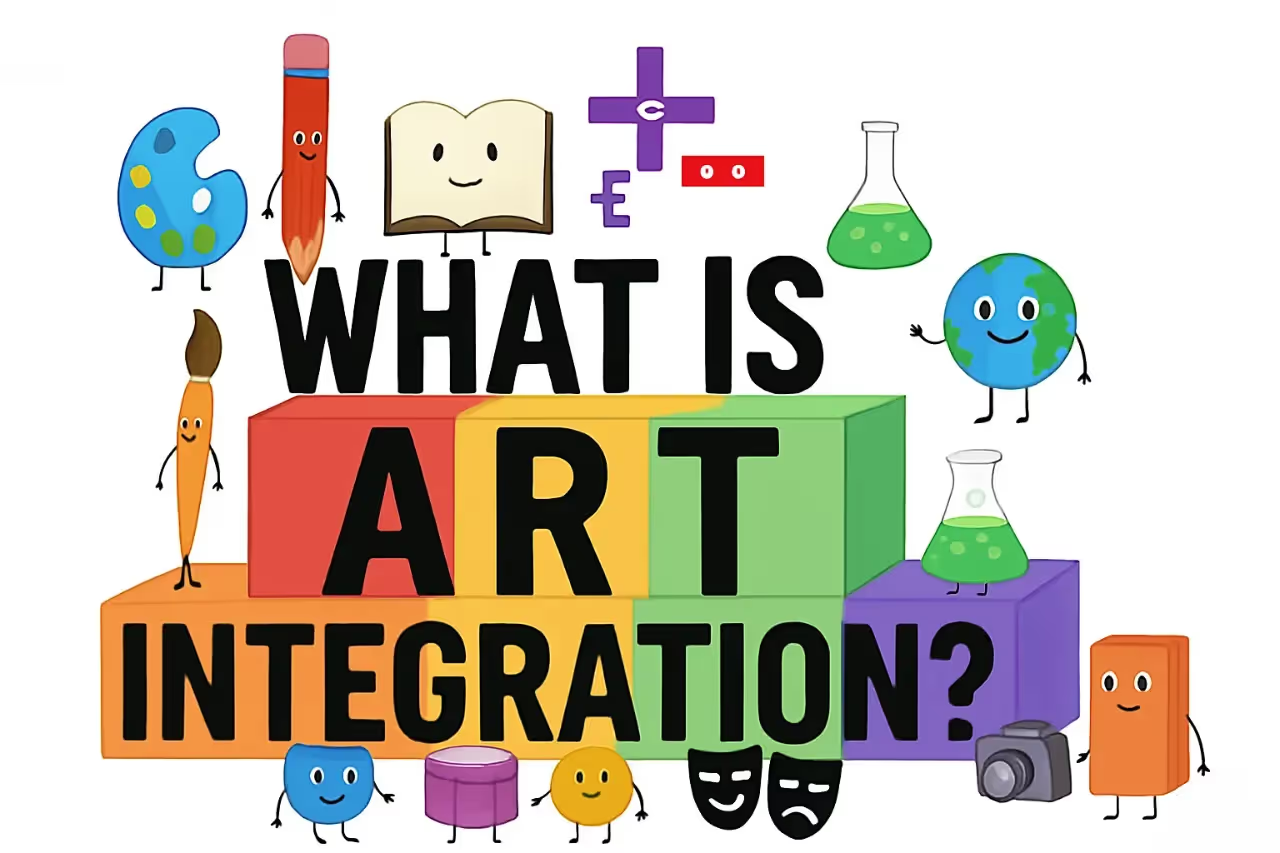<red> July 14th, 2025 <red>
The Central Board of Secondary Education (CBSE) has released its updated circular - Acad-43/2025, dated July 10, 2025 - detailing the Art-Integrated Project requirements for Classes I to X for the 2025-26 academic session.
While Art-Integrated learning has been in place for a few years now, the 2025 update focuses on execution, accountability, and structure - right from teacher collaboration to portal uploads and internal marks recording. Schools are now expected to integrate Indian art more meaningfully with academic concepts, while following clear norms outlined by CBSE.
Here’s everything educators, parents, and students need to know for the current academic session.

As part of the Ek Bharat Shreshtha Bharat (EBSB) programme, CBSE has issued revised state and UT pairings. Each school must ensure that at least one project from Classes I to X includes an art form from their newly paired region.
Some notable pairings for 2025 - 26 include:
This pairing mechanism ensures that students not only learn art, but also explore diverse cultures, languages, and geographical traits through artistic expression.
Schools and students have the flexibility to choose from any Indian visual, performing, or applied art forms. These may include:
Students can creatively explore science experiments, historical timelines, mathematical principles, and even geography and environmental studies through these art forms.
The circular clearly directs schools to conduct joint planning sessions at the start of the academic session between subject teachers and art teachers.
Planning responsibilities include:
CBSE recommends that project topics:
For instance, a student may explore how tribal art reflects environmental values in a Social Science project or use geometry and symmetry in folk embroidery patterns as part of a Math project.
Projects must reflect sustainability and inclusivity. As per the guidelines:
This ensures equal participation across schools regardless of location or access.
The Art-Integrated Projects in Class X are now an official part of internal assessment and carry weight under the Subject Enrichment category.
This shift reinforces the value of creativity and research in the formal learning process.
To formalize the documentation process, CBSE has made it compulsory for schools to upload all project details on the KALASETU portal before issuing admit cards for Class X Board exams.
The following must be uploaded:
The portal can be accessed via cbse.gov.in using the school’s existing login credentials.
What Parents Should Know - Art Integrated Projects are designed to be inclusive, accessible, and enjoyable. As a parent, you can expect:
CBSE’s revised 2025-26 guidelines on Art-Integrated Projects mark a shift from symbolic implementation to clear, structured integration into the academic framework. So, basically the board is signalling that art is no longer co-curricular, it is integral to the curriculum. That’s all for 2025-26 updates!
<red> June 28th, 2023 <red>
Art Integration is an effort on the side of CBSE to bring back the idea of Arts in our lives. In middle school, many schools do promote art through dance, painting, or enactment/ theatre. However, as we grow up, the focus of our education gradually shifts from visual or so to say from the idea of learning to livelihood.
In Circular No. Acad 33/2020 dated 14th May 2020, CBSE has introduced “mandatory Art Integrated project work for classes 1- 10 as part of Subject-Enrichment activities under Internal Assessment”
These are some of the ideas teachers can take reference from. And, to know more about Art Integration you can click on the button below.
Teachers have the responsibility to support the learning of the chosen Indian art form and ensure that students can creatively incorporate the art form(s) into their projects.
This initiative aims to provide CBSE School students with an opportunity to become familiar with the culture, traditions, and geography of additional States and UTs as envisioned in the Ek Bharat Shreshtha Bharat Programme (EBSB).
Common salt, discoloration of leaves, medicines, etc, most of the things around us are a product of Chemistry. The core of Art integration comes from this realisation that everything we learn has real-life implications. Our Educart Question Banks have an entire feature dedicated to explaining to students the real-life implications of all the concepts in each chapter. And these examples are available for all the subjects with simplified NCERT theory.

Students can be asked to click pictures of monuments, or buildings that represent Mathematics. The example provided here is in reference to the chapter- Triangle. Students can easily connect the pictures they have taken with different concepts and theorems.

This Real-life example has been taken from the chapter- Electricity. Students can be asked to create a project on the electricity supply at their home. They can get creative with it, it can be in the form of a report or a full-length essay with pictures, either way, they should be able to relate the theory applicable at all possible places.
It can also be given as a part of an English project.

This real-life example is from the chapter- Chemical Reactions. Students can perform a theatre centering around the life of a banana and make it humorous, or sad, or present it in any way they want to.